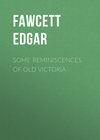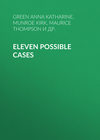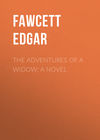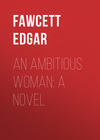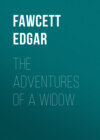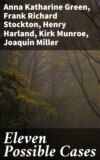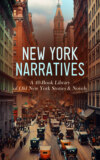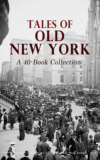Читать книгу: «Some Reminiscences of old Victoria», страница 2
CHAPTER III.
MY BOYHOOD DAYS IN VICTORIA
How dear to this heart are the scenes of my childhood,
When fond recollection presents them to view!
The orchard, the meadow, the deep-tangled wildwood,
And every loved spot which my boyhood then knew.
Oh! give me back my boyhood days,
The sportive days of childhood.
The merry games with bat and ball,
The rambles through the wildwood.
As I stated in my experiences in San Francisco in the early fifties, and in consequence of the loss of my father’s vessel near Alberni, we came north to Victoria after gold was discovered in British Columbia. We took passage in the steamer Northerner, which was filled with passengers and freight, and came via Portland, arriving in Esquimalt on the 11th day of February, 1859. I might state that all the ocean steamers docked at Esquimalt then, and the passengers were freighted round in a smaller steamer to the Hudson’s Bay wharf in our harbor. The first thing that attracted our attention on coming into the harbor was the high palisade of the fort, which ran along Wharf Street from the corner of Bastion to Broughton Street, up thence to Government Street, along Government to Bastion Street, to the cigar store with the brass plate on, now occupied by North and Richardson. Opposite Fort Street there was an entrance, and another on Wharf Street.
In the centre of the large gates there were smaller ones. These small gates were opened every morning at seven o’clock on the ringing of the fort bell, which was suspended from a kind of belfry in the centre of the yard. To the north were the stores and warehouses, and to the south large barns; the residences were situated on the east side of the fort.
The stores were patronized by all the colonists, not then being confined to the Company’s servants, as in former times. Fort Street looked very different to what it does now. The roadbed was composed of boulders, which, being round, made rough riding, and so muddy, too! Try and imagine it. The sidewalk was of two-inch boards, laid lengthwise, three boards wide, I think, and commenced at the Brown Jug corner, running up for three or four blocks.
Where the Brown Jug now stands was a large orchard and garden, surrounded by a whitewashed fence, which ran along Government Street to Broughton, taking in the whole block eastward. Many an apple have I had from this orchard, and apples were apples in those days, whatever they may be now.
The Company’s bakery, where we got our bread, was across Fort Street, on the site of the Five Sisters block, and was a log-built house, whitewashed. I think part of the bakehouse was to be seen in late years in the rear of a carpenter’s shop on Broad Street, also I think the baker himself is still alive, and named James Stockham. He made excellent bread and charged twenty-five cents a loaf, but such loaves they were, being at least three times as large as modern loaves.
There was a good story told of the Hudson’s Bay Company, and the price of flour and bread during the gold excitement, which reflected great credit on the Chief Factor of the company. It was said that a scheme was concocted to corner all the flour in the country (à la trust) by some enterprising citizens across the border; and the Company was approached by these gentlemen, who proposed to them to buy their whole stock of flour for that purpose. To the credit of the Company’s officials, they refused to do so, and sold at the usual price, against the combination, and so broke it up.
After we had got settled in our new home the question of sending me to school was discussed, and easily settled, for it was Hobson’s choice. The Colonial School, as it was called, was on the site of the present Central School. It was the only one I can think of except Angela College, and maybe a private school. There was a fee of five dollars a year charged, payable quarterly in advance.
After you left Blanchard Street, the way to the school was by a pathway through the woods. The country around View and Fort Streets, up to Cook, was very swampy, and covered mostly by willow and alder trees. In fact there was a small swamp or lake on View Street, where there was good duck shooting in winter. When I went to the Colonial School in 1859, it was taught by a young man named Kennedy, whose father was Dr. Kennedy, of the Hudson’s Bay Company, and whose brother was in the same service. Some months later he resigned, and his successor was an Irishman named W. H. Burr, whose temper was quick, like my own, and although he tried to make me a good scholar, I am afraid I did not do him or his teaching justice, and I remember two good beatings he gave me far better than the useful knowledge he tried to inculcate.
It was thus: Our school might aptly be termed a mixed one, for it consisted of boys and girls who sat together. This arrangement just suited me, for I was fond of the girls. There were white boys and black boys, Hebrews and Gentiles, rich and poor, and we all sat close together to economize room. One day a dispute arose between a white boy and a black boy, and ended in a fistic encounter. I was mainly instrumental in bringing it about, and backed my man until the sponge was thrown up by the white boys’ friend. Mr. Burr heard of the occurrence through the boys not reporting at the school the next morning, and an investigation by the master revealed my part in the affair. I was sentenced to be flogged for aiding and abetting. This was announced in the morning, and to be carried out in the afternoon. My friends collected around me after school closed and various advice was given me as to how I should act under the trying circumstances. After the consultation was over it was decided that I should put on a pair of old gloves inside out, as it was supposed the cane would not hurt as much that way, and it being dusk at four o’clock, when we broke up in winter, the master might not see the difference in the color of my hands. I was on hand at flogging time, against the advice of some of my friends, who counselled me not to show up. Mr. Burr laid on the cane on my hands, and at first I did not feel it much, but after about half the whipping was given it got unbearable, and I could not hold out any longer, so bolted, was stopped, knocked down, and eventually I got under the seats and desks, and was followed by the irate master and hit on any part that was exposed to view. Mr. Burr did not give up until he was tired out, and I was glad to take advantage of this fact and get out, and off home, a much wiser if not a better boy. I got little sympathy at home when I told them that I had been whipped for causing a fight between a white boy and a black boy named White.
My next whipping was interrupted by the master’s wife, who frequently interfered, and by her pleadings for the culprit and offering to go bail for his future good behavior, got him off with lighter punishment. I shall always think kindly of Mrs. Burr, for if ever there was a good, kind-hearted woman it was she. Mr. Burr often went to auctions, and before going, he appointed a monitor, who had charge during his absence. One day during his absence all hands vacated our desks and proceeded to the vegetable garden, which contained a good assortment of all kinds, and as boys are known to be over-fond of raw carrots and turnips, especially if stolen, we were soon at work digging up our favorite vegetables. After peeling them with our jackknives we might have been seen sitting on the fence and school porch eating as only boys can eat. In the midst of our vegetarian feast the lookout announced the distant approach of the master, and then there was a scattering of the boys, as half-eaten carrots and turnips were thrown away, and we regained our seats in school looking as innocent as lambs. Then Mr. Burr appeared on the scene. Mrs. Burr must have seen us, but was too good-hearted to tell her husband all she knew.
I have said the school was reached by a trail through the woods, and very pretty the woods looked in summer. The school and grounds were surrounded by spreading oaks, which covered that part of the city, or country as it was then called, and it was under these trees we sat with the girls and ate our lunch, or rested in the shade after our innings at ball. Wild flowers, that now are only found miles away, were found there in profusion. We children always took our lunches, it being considered too far to go home for the midday meal.
Many will remember the old schoolhouse which was pulled down to make way for the present Central School. It was built of square logs and whitewashed, and was occupied by the master and his family. The school proper occupied only about a third of the building, and was a large room extending from the front to the back of the building. Of the old boys and girls who survive those early school days I can think of these: Judge Harrison; John Elford, of Elford & Smith; Theophilus Elford, of Shawnigan Lake Lumber Company; Mr. Anderson, of Saanich; the Tolmie and Finlayson boys; Edward Wall (late Erskine & Wall); Ernest Leigh, son of the late city clerk, now of San Francisco, and John and Fred Mecredy, also of San Francisco. Of the girls there are Sarah Allatt, now Mrs. Jos. Wriglesworth; Sylvestra Layzell, now Mrs. O. C. Hastings, and her sister Lucy, now also married; and Sarah Pointer, now Mrs. Carter. I had nearly forgotten Ned Buckley, who left here for the States and became an actor of some note.
Of those dead I can best remember David Work, of Hillside Farm, and my chum, the late James Douglas, son of Sir James, then Governor. If I remember right, he was unintentionally the cause of my second whipping. He seemed much attached to me, and many were the rides we had together in his trap, which brought him to school every morning. He was a kindred spirit, wilful like myself, and had a habit of suddenly getting up in school and announcing to the master that he was going home, or it might be for some long drive, usually to Cadboro Bay. Mr. Burr would remonstrate with him, but generally gave way, and off he went. As he and I got intimate he wanted me to go with him on these expeditions, and often at the unseemly hours of two or three o’clock, during school.
One day he got up suddenly in his seat and said: "Mr. Burr, I am going home and I want Fawcett to go with me; that will be all right, won’t it?"
"Now, Master James," said Mr. Burr, "I cannot allow this; I must protest against this going away during school hours. If His Excellency only knew, what would he say?"
"Oh, that will be all right, Mr. Burr."
"No, no, James, it is not all right, and as for Fawcett going with you I cannot allow it, Master James; heed me or I must have a word with Sir James about you."
All this time James was standing up at his desk with his riding-whip in his hand, and making signs for me to follow, which I proceeded to do, the master protesting all the time. I got my reward next day, but not as bad as I would have got had not good Mrs. Burr come to my rescue. We drove to Upland Farm, then the home of City Clerk Leigh and his family, at Cadboro Bay. Mrs. Leigh was always good to James and I on these visits to the farm, getting us the best to eat and plenty of fresh milk to drink. By some understanding between Sir James and Mr. Burr we continued these afternoon drives, and it may be imagined how we boys enjoyed them. We continued friends to the last, and years after I worked like a beaver when he was elected a member of the Legislature for Victoria City. He was godfather to my eldest son, who was named after him. I have still a handsome book given me by Sir James at the last break-up of school before I left.
We now and then hear complaints by prudish people of the boys bathing on Victoria Arm, on Deadman’s Island and elsewhere without a full bathing suit. What would they say to the boys of my time bathing in Nature’s suit only, and that on the waterfront from James Bay bridge all around to the Hudson’s Bay Company’s wharf? We bathed there at all times, and to our heart’s content, and never was exception taken to it by the authorities, or in fact by anyone. Use is second nature, and I suppose that accounted for it.
Have any of my readers ever seen Deadman’s Island (the island which is opposite Leigh’s mill) when it was covered with trees and shrubs? Well, up these trees were corpses of Indians fastened up in trunks and cracker boxes, but mostly trunks, the bodies being doubled up to make them fit in the trunk, and then suspended like Mahomet’s coffin between heaven and earth. There were also some Indians buried in the shallow soil and surrounded by fences, and again boxes of corpses were piled one on top of the other. This island was a favorite place of the school boys as a rendezvous for swimming, and many a summer’s afternoon and Saturday have I spent there in the good old days gone by.
I shall now relate an incident of one of these expeditions to the island by myself and three others. I can recollect the names of only two members of the expedition of that Saturday, and I might say that they were my schoolfellows of the Collegiate School, which occupied the site of Mr. Ellis’s residence on Church Hill, and was afterwards burnt down. I left the Colonial School in 1860, and transferred to the Collegiate School, which was conducted as a church institution. Rev. C. T. Woods was principal, with Rev. Mr. Reese, "Cantab." Williams, and Messrs. Vincent and Palmer, French and drawing and music, as the full staff. Well, about the Deadman’s Island affair. One Saturday afternoon in midsummer four of us – Robert Branks, a brother of Mrs. Doctor Powell, William Galley, James Estall and a fourth whose name I cannot now remember hired a boat at Lachapelle’s, near James Bay Bridge, and made for Deadman’s Island. We enjoyed the luxury of running about the island like the savages on Robinson Crusoe’s island, then dived into deep water, swam around for a time and landed to dry and warm ourselves at a fire we had made for that purpose. All boys know that a fire is indispensable to swimming and bathing.
While squatting on the ground around the fire the idea struck me that by the way the wind was blowing it would not need much encouragement for the fire to take hold of some of the boxes of bones, which may have represented an Indian chief, his wife or child. I then proposed that we accidentally on purpose "set fire to the whole lot." After a council of war it was finally decided to carry out my suggestion, as a grand wind-up of our day’s outing. Time after time we dived off, and swam around till tired, and then came ashore to dry ourselves at the fire. This is the exact routine of boys’ swimming expeditions of these present days, and will be to the end of all time. We got tired of it at last and dressed, preparing to go home, when the subject of the firing of the Indian corpses was again discussed. Should we do it or not? Robert Branks was with me all right, but one boy was fearful of the consequences. "The chief and all the Indians on the Songhees reserve would soon see the fire and would be after us." There was something in this, for there were hundreds then, where there are now dozens, and it was risky.
After each had said his say, we put it to the vote, and it was carried three to one that the fire take place. We set fire to a lot of pieces of broken coffins at two separate places alongside a pile of boxes or trunks of bones. Then we made all haste to get aboard our craft, up sail and away. We had hardly reached the bridge and crossed the harbor from the bottom of Johnson Street to the Indian reserve, when the fire could be seen plainly as having been a success from our point of view – so much so that we made greater haste to get to the boathouse. We lost no time in settling up for the boat hire, and making the best of our legs in getting home. The paper next morning was early sought for, and with fear and trembling, too. There was good reason for fear, for the paper gave an account of the affair. The Indians had made complaint to the police, and they were searching for the culprits. I was afraid to go out at all, much less to go to school, and every knock at the door made me start. I at last confessed to my parents my share in the business, and it was decided that I must "lay low" for a few days, and lucky it was for me I did not get what I deserved, a good whipping, as my mother said. The quartette of boys kept their counsel, and we escaped a visit from the police.
Some time later we visited the island to see the result of the fire, and found that all traces of the burying-ground had vanished, the surface of the island being swept clean, with not a trace of boxes, bones or trees, and it has remained so till this day.
In the absence of Chinese market gardens, and the kitchen garden now attached to most homesteads, we had to go to a distance for our vegetables. It took us the best part of a day to go to Hillside Farm for a sack of assorted vegetables. Several boys would start together for this trip into the country. It is astonishing how the absence of streets or roads lengthens this distance, and so it was then. We started after breakfast and took our lunch, going across country by trail, each with a sack, which was filled by old Willie Pottinger, the gardener, for a shilling. Very good and fresh they were, and very cheap this was considered. With our loads we started for home, and the further we got from Hillside the heavier the vegetables got, and therefore the more stoppages we made to rest. At last Port and Blanchard Streets were in sight, and we were home again, tired out and hungry as hunters.
The last I remember of the Hudson’s Bay fort was during the contest brought on by the burning question of the day, namely Union and Tariff vs. Free Port. The mainland represented Tariff and the island Free Port. Should we join with the mainland with a tariff or remain Free Port? The hustings was erected in the fort, and the pros and cons were discussed by the rival candidates. I took part, although too young to vote, and worked day and night for my friend Amor De Cosmos, who was in favor of union and tariff, and we won the day, too.
Before I conclude I would again speak of the large stores in the fort, which supplied the colonists with all they required except meats. It was said at the time that you might get anything at the stores, from a needle to an anchor. This might well have been true, for it was the repository of all the Company’s goods for supplying their servants with all their necessaries.
One of the first visits I paid was with my mother, as in San Francisco, and amongst various articles I carried away was a pair of Old Country boots. These boots I am not likely to forget, as I wore them so long. The soles were twice the usual thickness of even boys’ boots, and, like a horseshoe, had a row of nails with projecting square heads a quarter inch thick. These boots left their mark wherever they went, and, as may be supposed, as I was a strong, healthy boy with a roving disposition, they travelled considerably. Wear them out I could not, kicking rocks and stubbing my toes against everything I came against, for I found them awkward and heavy to carry, and in fact everything gave way before them. My poor mother often called out at the marks of the square-headed nails on her clean floors, which in those days were not covered with carpets or linoleum, as now. These boots were a feature of the store, and were, I think, $3.75 or $4 a pair – but enough of hobnailed boots.
CHAPTER IV.
VICTORIA’S FIRST DIRECTORY
In 1860 was issued the first directory of Victoria, Vancouver Island, by Edward Mallandaine, an architect, who continued to issue a Victoria directory at intervals for years afterwards. Through the kindness of Mr. Mallandaine, who is a pioneer of 1858, I am enabled to review this relic of early and interesting times, for those of us who remember them as "the good old times." I shall here give some of the author’s "Prefatory remarks":
"It has been thought by the author of the following work that the present being an age of advancement, the period has fully arrived when our fair town of Victoria is of sufficient importance to deserve that index of commercial progress, a Directory. We have been reliably informed that about 35,000 immigrants from California and elsewhere have arrived, and have produced a most marvellous state of transition in the two countries [Vancouver Island and British Columbia.] A number of wharves have been constructed this past season, a new timber bridge across James Bay has been built, giving access to the newly-erected Government offices for public lands and to Government House, which are of an ornamental character. Streets leading to the bridge have been graded and metalled over and are passable at all times. A temporary want of funds alone prevents more being done in this way, as also the completion of two embankments (in lieu of bridges) in a ravine [Johnson Street, I think, E. F.]. Wooden buildings have ceased to be the order of the day. We have been fortunate in hitherto escaping with but one single disaster in the shape of fire. Some public-spirited citizens taking the lead, a Hook and Ladder Company has been organized, and subscriptions raised to defray the necessary outlay of a building and a Hook and Ladder Apparatus and an Engine. We have a large bookstore [Hibben & Carswell’s]; two hotels of considerable dimensions, Royal and Victoria, and several houses, all erected in brickwork. The Hudson’s Bay Company are erecting a warehouse of pretentious dimension of stone, which they import from a distance of not less than forty miles, and a new bank, ‘Bank of British North America.’ Great demands are made for a Public Hall for meetings, and the want of a Theatre is felt. The last few months have seen an increase in our legal defenders, and the arrival of an attorney-general for British Columbia.
"We have seen by an effort in the right direction a large tract of land, 20,000 acres in the neighborhood of Victoria, put up for sale by auction at the upset price of $1.00 per acre.
"We have of churches one Episcopalian, one Roman Catholic, one Methodist mission, one Congregational mission, one nunnery school, Sisters of St. Ann’s, one private educational institute (by the author) for both sexes, and one Young Ladies’ Seminary.
"We have an hospital (Royal) started originally by Rev. Edward Cridge, of Christ Church, and now sadly overburdened with debt.
"A Masonic lodge is in course of formation; an Odd Fellows’ Association has been in existence for a year; a Ladies’ Benevolent Society, under the presidency of Mrs. Col. Moody; a Hebrew Victoria Benevolent Society has been in existence some six months; a Philharmonic Society, under the conduct of John Bailey, is among one of its oldest institutions, and to conclude we have in Victoria a free port. This is an immense advantage, coupled with its commanding situation for an eastern and Asiatic trade and its position, opposite the North American and Pacific railway (which will shortly be an undoubted fact). In conclusion, we have to place our work in its present state in the hands of an indulgent public," E. M., etc.
I now propose to review the names of the 1860 pioneer merchants, as illustrated on the covers and through the directory, bringing their names before the pioneers of those days again. This directory is nothing more than a history of the city at that time, and to me is most interesting reading. It is not to be supposed that newcomers of twenty years’ residence will give it more than passing notice, but they will excuse us old hands for being interested.
On the front cover is a picture of the Royal Hotel on Wharf Street, corner of Johnson, Jas Wilcox, proprietor, who also owned property on Fort Street opposite Philharmonic Hall, Wilcox Alley running through the property. The Royal Hotel with the Victoria were the first brick hotels built here in 1858. It was on a vacant lot alongside the Royal Hotel that the Rev. Alexander C. Garrett, about 1861 or 1862, used to preach on Sunday afternoons to large crowds, mostly sailors and miners, although all sorts and conditions of sinners were there. He was a most eloquent Irishman, was a missionary to the Indians, and lived on the Songhees reserve. The choir of Christ Church attended to lead the music, and as I was a choir boy, I was there, as also, I think, Dr. Davie. The minister stood on a packing-box, and the whole scene is vivid in my memory. The motley crowd, as may be supposed, the music in the open air, and the eloquent speaker, all combined to make the scene one to be remembered. Mr. Garrett left here for the States, afterwards being made bishop of the Protestant Episcopal Church of America.
On the inside of the cover is a picture of Stationers’ Hall, Hibben & Carswell, on the corner of Yates and Langley Streets. During fifty-four years the business has gone on prospering. Although the three principals of that day are gone to their rest, the business is still carried on as Hibben & Co., under the able management of William S. Bone, one of its partners. I might state that Mr. Bone entered the business as a boy at the age of eighteen years, and subsequently a partnership was formed, consisting of T. N. Hibben, C. W. Kammerer and William H. Bone. R. T. Williams, in charge of the Provincial Government Bindery, was also on the staff of this pioneer firm in the early sixties.
On the next page are two views, one of William Zelnor’s drug store, on Government Street, between Yates and Johnson, east side. He afterwards moved to the corner of Yates and Government, where the B. C. Market now does business. The second is the store of Webster and Co., Yates Street, the building now occupied by Bissinger and Co., hide dealers. Mr. Jesse Cowper, who was a resident of Menzies Street, James Bay, was a partner in the firm, and a cousin of the Websters, and after many years’ connection with the concern retired to enjoy the results of his success in this business. He has since died.
Janion & Green, commission merchants, foot of Johnson Street, near the bridge, come next. The firm was afterwards Janion, Green & Rhodes; the latter was the respected father of Mr. Rhodes, of the firm of Brackman & Ker Milling Co., and was Hawaiian consul, having previously been in business in Honolulu. The business house of A. Hoffman, dry goods, north-west corner of Yates and Government, is a frame building. Next are two well-known firms, viz., A. Gilmore, merchant tailor, Yates Street, fourth door from Waddington Alley, and K. Gambitz, Yates Street, next to Bank of British North America. He was an American Hebrew, and sold out to Thomas and William Wilson, who for many years conducted the business on Government Street as the "City House."
James Bell, general hardware, Johnson Street; Robertson, Stewart & Co., commission merchants, Yates Street; and Bayley’s Hotel, which was on the site of the Pritchard House, now turned into a bank; Sporburg & Co., importers of provisions and dry goods, Wharf Street, foot of Yates; Thos. Patrick & Co., corner Johnson and Government Streets, wholesale liquors; Pierce & Seymour, corner Yates and Douglas Streets, furniture dealers. Mr. Seymour was one of the charter members of the Pioneer Society, which society he took a great interest in. He was a firm believer in the cold water cure, and took cold water baths for all ailments. One morning, his furniture store (which then occupied the site of the Colonist Building) not opening up at the usual hour, the door was broken open, and Mr. Seymour was found dead in his cold bath. He was a good-hearted man, and a good friend to many. Lester & Gibbs, the colored grocers, Yates Street, between Wharf and Government Streets; Adolph Sutro & Co., wholesale cigars and tobacco, corner Wharf and Yates Streets; A. Blackman, stoves and tinware, Yates Street, near Wharf; N. Munroe & Co., Yates Street, opposite Stationers’ Hall, dry goods and clothing; Pioneer Mineral Water Works, Humboldt Street, south side; Phillips & Co.; E. Mallandaine, architect, Broad Street, near Yates; Macdonald & Co., bankers, Yates Street. Of this bank I have a lively recollection, as its career came to an end suddenly by the discovery being made one morning that the bank had been robbed, and exit made through the roof. I have $36 of their notes to remember it by. W. F. Herre, News Depot, Yates Street, between Wharf and Government Streets; W. H. Oliver, Johnson Street, opposite Wharf Street, wholesale dealer in liquors (situated over the ravine); C. J. Pidwell & Co., furniture dealers, Yates Street; Wells, Fargo & Co., Express and Exchange Co.; C. C. Pendergast, accountant, Yates Street, between Wharf and Government Streets; G. Huston, gunsmith, Yates Street, below Wells, Fargo & Co.; Langley Bros., wholesale and retail druggists, Yates Street; J. D. Carroll, wines and liquors, wholesale, Yates Street; Reid & Macdonald, commission merchants, Wharf Street; Wm. Burlington Smith, groceries, Government Street, near Yates; Selim, Franklin & Co., auctioneers and land agents, Yates Street. I think all these names will be familiar to some of the early pioneers, as they are to me.
Public Departments of Vancouver Island for 1860.
Governor – James Douglas, C.B.
Legislative Council – His Excellency the Governor, Hon. John Work, Hon. Roderick Finlayson, Hon. David Cameron, judge; Hon. Donald Fraser, clerk; Rev. Edward Cridge.
House of Assembly – Members for Esquimalt – J. S. Helmcken, M.D., Speaker; Capt. Cooper, harbor master, and Capt. J. Gordon. Members for Victoria District – W. F. Tolmie, M.D.; A. D. Waddington, H. P. P. Crease, barrister; G. H. Carey, Attorney-General, B.C., and Selim Franklin. Saanich – C. Coles. Nanaimo – A. R. Green. Lake District – Major Foster. Salt Spring – J. J. Southgate. Metchosin – J. McDonald.
Ecclesiastical – Right Rev. George Hills, Bishop of British Columbia; Rev. Edward Cridge, Victoria; Rev. R. Dundas, Esquimalt; Rev. R. Dawson, Craigflower.

